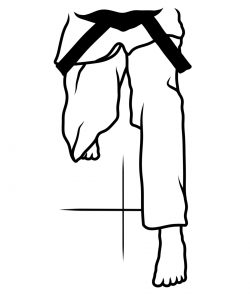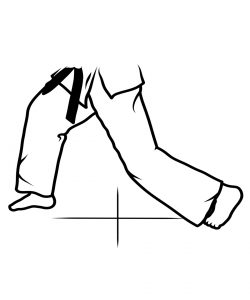Dachi (Stance)
Heisoku Dachi (Closed Foot Stance) – Toes and heels together.
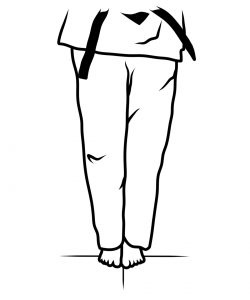
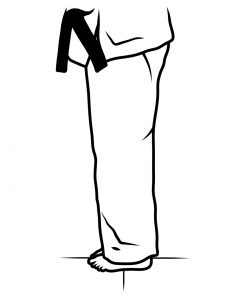
Musubi Dachi (Formal Attention Stance) – Point the feet diagonally outward, keeping the heels together. Straighten the knees naturally.
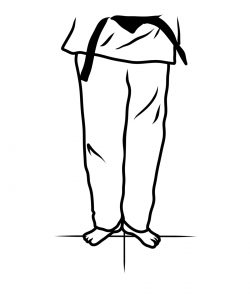
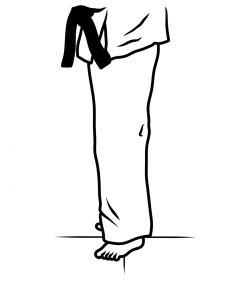
Heiko Dachi (Parallel Stance) – The toes of both feet are pointing directly forward. The inner sides of both feet are kept parallel to each other. Locate the center of gravity at a point midway between both feet. The knees are straighten naturally.
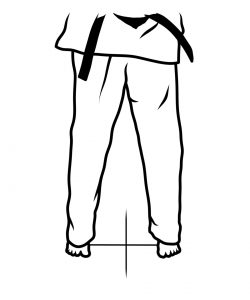
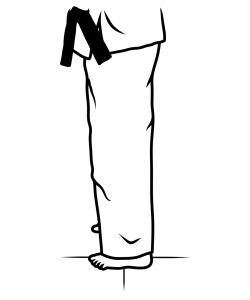
Seisan Dachi (13 Hands Stance) – Keep the heel of the front foot on the same line as the big toe of the rear foot. The toes of both feet are turned slightly inward. Tense the muscles of the inner side of the thighs and pull the hips upward and tense the buttocks inward simultaneously. The center of gravity falls at a point midway between the feet. Keep the soles of the feet firmly in contact with the ground. The knees are bent.
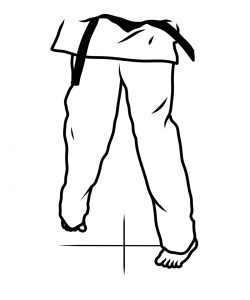
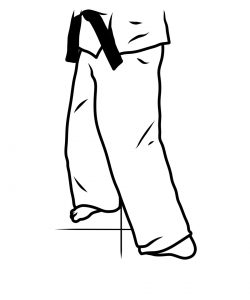
Renoji Dachi (Letter “Re” Stance) – The toes of the front foot are pointed directly forward, and the toes of the rear foot are pointed outward at a 45 degrees angle, so that both feet form the Japanese letter “Re”. The distance between the heel of the front foot and the heel of the rear foot is equal to the length of one foot. The knees are straightened naturally.
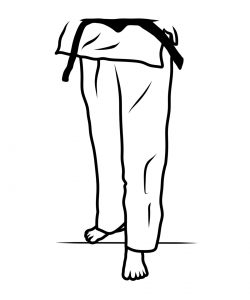
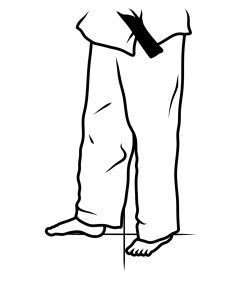
Nekoashi Dachi (Cat Foot Stance) – Lower the hips deeply and support most of the body weight with the rear leg. The heel of the front foot is raised slightly. and the ball and toes of the front foot touch the ground lightly. The back foot is angled approximately 30 degrees.
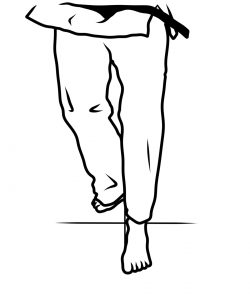
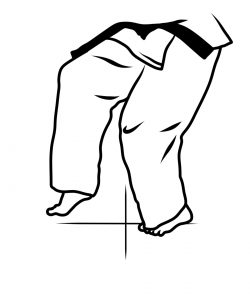
Sagiashi Dachi (Heron Stance) – Raise one knee, while balancing on the other foot. The knee of the supporting leg is bent slightly. The toes of the lifted leg are pointed forward.
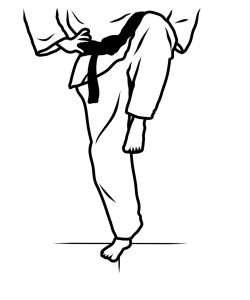
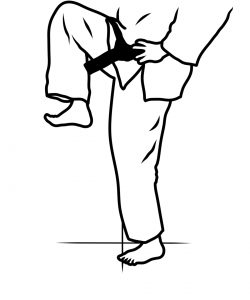
Shiko Dachi (Straddle Leg Stance) – Lower the hips deeply. The big toes are pointed outward diagonally. The knees are turned outward. The body weight is supported evenly by both legs. Keep the soles of the feet firmly in contact with the ground.
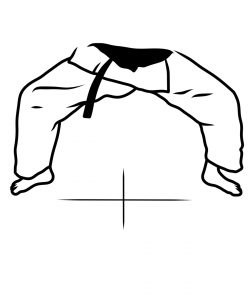
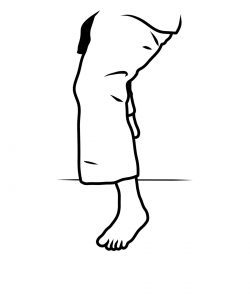
Zenkutsu Dachi (Front Stance) – Maintain a width between the feet equivalent to the width of the shoulders. Point the front foot very slightly inward and the rear foot diagonally outward. Drop the hips deeply. Bend the right knee of the front leg and turn it slightly inward. Straighten the rear leg naturally, keeping the heel of the rear foot firmly on the ground. The weight of the body is supported by both legs, but mostly by the front leg.

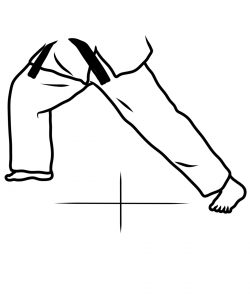
Kokutsu Dachi (Back Stance) – Straighten the front knee and transfer the weight from the front leg to the rear leg, then bend the rear knee. Most of the weight of the body is supported by the rear leg. A variation of this stance consists of also bending the front knee and pointing the front toes to the front. Another variation of this stance consists of lowering the body closer to the ground.
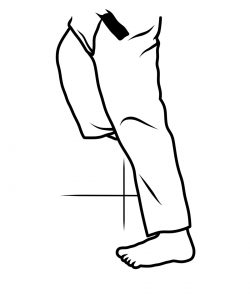
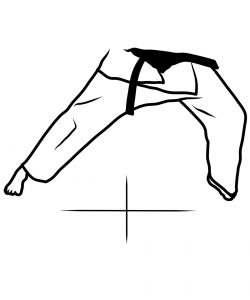
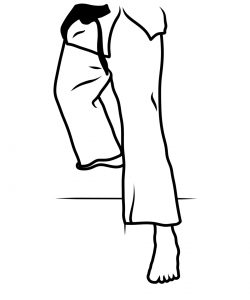
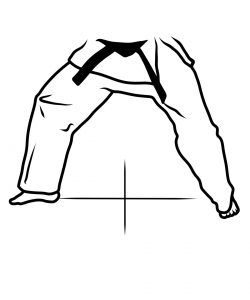
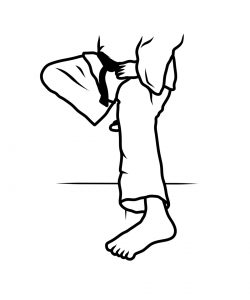
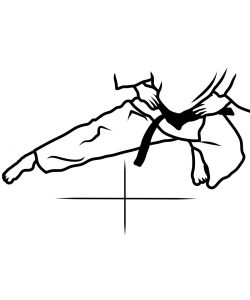
Kiba Dachi (Horse Riding Stance) – The toes of both feet are pointing directly forward. The inner sides of both feet are kept parallel to each other. The weight of the body is supported equally by both legs.
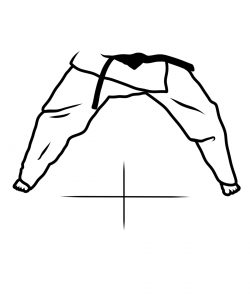
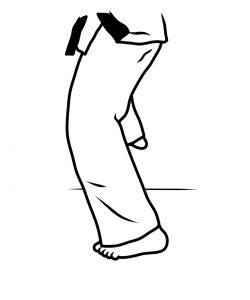
Naifanchin Dachi (Inside Fighting Stance) – Turn the heels outward and the tips of the toes are pointed slightly inward. Lower the hips. Tense the buttocks. The body weight is supported equally by both legs.
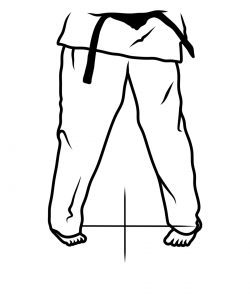
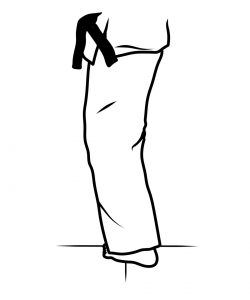
Kosa Dachi/Ryunen Dachi (Turning Cross Leg Stance) – Cross the legs, bend the knees and lower the hips. This stance is often used to change the direction of one’s movement quickly.
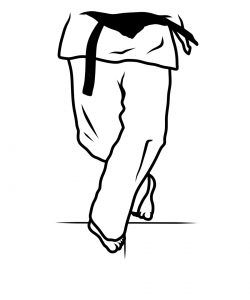
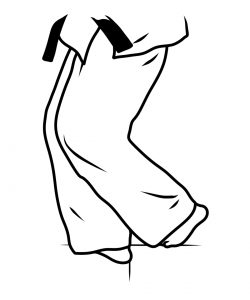
Iaigoshi Dachi (Kneeling Stance) – This stance is formed by kneeling on one knee with the toes of that foot on the floor. The other foot is about a fist width in front and to the side of the knee on the floor. The upright knee is directly over the toes of the front foot.
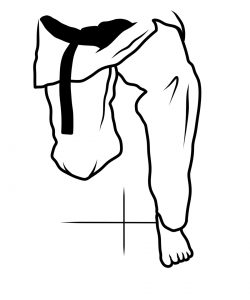
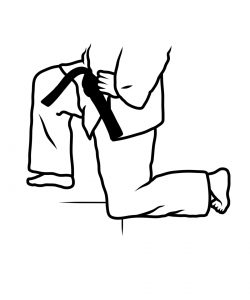
Shizentai Dachi/Hachiji Dachi (Character for Number Eight Stance) – Feet shoulder width apart, toes pointing out at 45 degrees.
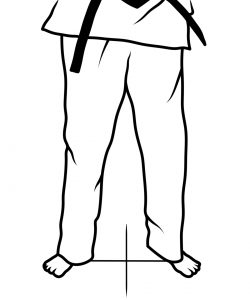
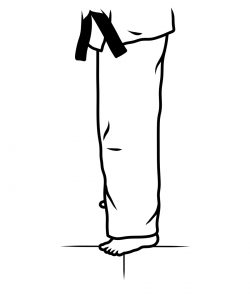
Hanzenkutsu Dachi (Half Front Stance) – Basically the same as Zenkutsu Dachi, but with half distance between the feet.
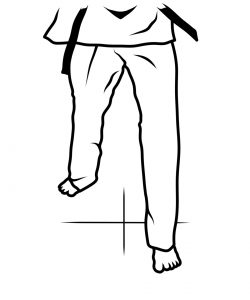
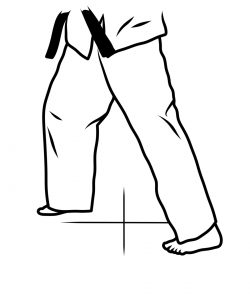
Tsuruashi Dachi (Crane Leg Stance) – Similar to Sagiashi Dachi. The placement of the raised foot is modified to hook behind the knee.
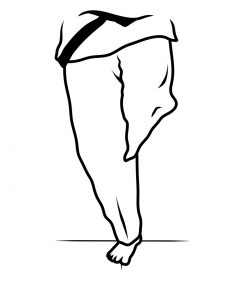
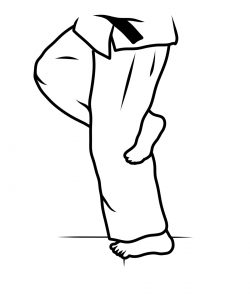
Sanchin Dachi (Hourglass Stance) – Similar to Seisan Dachi, but shorter. The toes of the rear foot are are the same level of the instep of the front foot. The knees are straighten naturally.
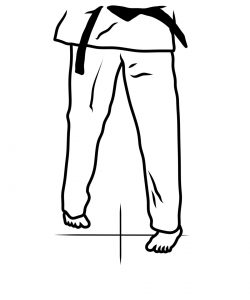
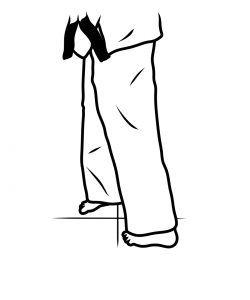
Gyo Dachi (Transition Stance) – The feet separation is the same as in Kokutsu Dachi. The hips stay squared off with the rear knee bent, but without touching the ground.
